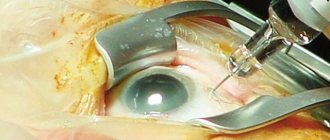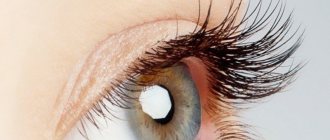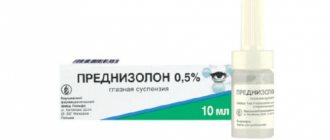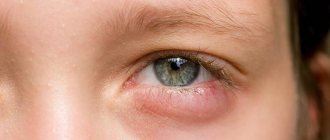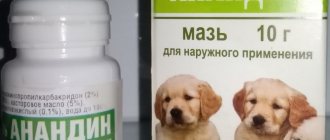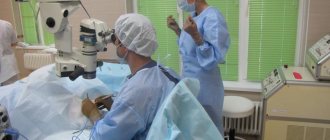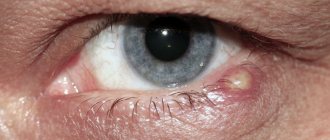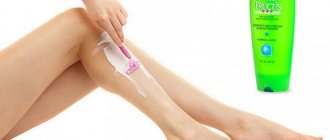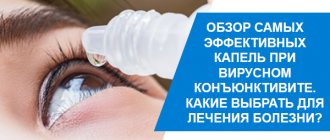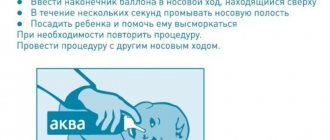Composition and pharmacological properties.
Contains the active ingredient - ciprofloxacin - 100 mg/ml, and lactulose as an excipient.
Ciprofloxacin is an antibiotic of the fluoroquinolone group, has a wide spectrum of antibacterial action, is active against gram-positive and gram-negative bacteria, including Echerichia coli, Salmonella spp., Shigella spp., Klebsiella spp., Enterobacter spp., Proteus spp., Yersinia spp., Haemophilus spp., Pseudomonas aeruginosa, Pasteurella multocida, Plesiomonas shigelloides, Campylobacter jejuni, Brucella spp., Chlamydia trachomatis, Listeria monocytogenes, Mycobacterium spp., Corynebacterium diphtheriase, Staphylococcus aureus and Streptococcus spp.
Lactulose is a prebiotic and a disaccharide.
Instructions for use: how to use the drug correctly
Tsiprovet is effective for therapeutic and prophylactic purposes.
Tsiprovet in a plastic bottle is equipped with a convenient built-in dispenser, suitable for instillation. During the procedure, you should not touch the end of the bottle to the cornea or eyelid. To work with the medicine in a glass bottle sealed with a rubber stopper, you will need a pipette.
The standard course of treatment lasts 1-2 weeks and involves using the medicine 4 times a day. The drug is instilled into the affected eye, 1 drop at a time. To prevent drops from flowing out, you need to fix the animal’s head with your hands, lifting it. In case of heavy purulent discharge, it is recommended to release 3-4 drops into the affected eye, wait a little, and then remove the softened crusts, pus and other contaminants with a clean, damp swab. After this, you need to release 1 more drop of Tsiprovet into the cleaned eye.
After the end of the cycle, it is recommended to take a break. If recovery does not occur, treatment can be repeated. In individual cases, the veterinarian may give other recommendations depending on the picture of the disease. It is not recommended to interrupt the prescribed course.
Side effects in veterinary medicine
Ciprovet may cause mild to serious side effects in animals. The following list contains some key side effects that may occur while taking Ciprovet. This list does not include all possible side effects:
- nausea
- diarrhea
- vomit
- stomach upset
- ataxia
- rash
In addition, liver test results may be higher than usual. This is usually temporary, but can also be a sign of liver damage.
Serious side effects and their symptoms may include:
- Tendon rupture or swelling
- Liver damage
- Severe allergic reaction
- Seizures, tremors, or epilepsy
- Intestinal infection
Sereniya for cats and dogs: instructions for use of tablets and injections
+7(495) 510-86-04 Moscow, Otkrytoe shosse, building 5, building 6
+7(495) 972-74-06 Moscow, st. Nizhnyaya Krasnoselskaya, house 28
VetLek / Instructions / C / Sereniya solution for injection
We recommend:
Subscribe to VETLEK veterinary pharmacy news!
antiemetic for dogs and cats
(US development organization)
I. GENERAL INFORMATION
Trade name of the drug: Serenia.
International nonproprietary name: maropitant citrate.
Sereniya contains 1 ml of maropitant citrate as an active ingredient - 10 mg, and as excipients - metacresol - 3.3 mg, sodium β-cyclodextrin sulfobutyl ether - 63 mg and water for injection - up to 1 ml. In appearance, the drug is a transparent liquid of light yellow color.
The drug is packaged in 20 ml glass bottles, sealed with rubber stoppers reinforced with aluminum caps. The bottles are packed in individual cardboard boxes. Each box containing the drug includes instructions for its use.
Serenia is stored in sealed manufacturer's packaging, in a dry place, protected from direct sunlight, separately from food and feed at a temperature of 3 o C to 25 o C.
The shelf life of the medicinal product, subject to storage conditions, is 3 years from the date of manufacture. After selecting part of the drug from the bottle, subject to aseptic rules and specified storage conditions, it can be used repeatedly for 90 days. Do not use Serenia after the expiration date.
The drug is stored in places inaccessible to children.
Unused medicinal product is disposed of in accordance with legal requirements.
II. PHARMACOLOGICAL PROPERTIES
Sereniya belongs to the group of antiemetics.
Serenia's active ingredient, maropitant citrate, is an antagonist of neurokinin receptors (NK1) and inhibits the binding of substance P, a neutropeptide of the tachykinin group, in the central nervous system. Maropitant is effective against vomiting of both central and peripheral origin.
Maropitant is rapidly absorbed after subcutaneous administration and reaches maximum blood concentrations within 45 minutes. The bioavailability of the drug is 90%. Maropitant is more than 99% bound to plasma proteins. Maropitant is metabolized in the liver by cytochrome P450 and is excreted primarily in feces.
In terms of the degree of impact on the body, maropitant citrate is classified as a moderately hazardous substance (hazard class 3 according to GOST 12.1.007-76).
III. ORDER OF APPLICATION
Sereniya is used to prevent vomiting of various origins in dogs and cats.
The drug is not recommended for pregnant and lactating animals. The use of the drug in animals with increased individual sensitivity to the components of the drug is prohibited.
The drug is administered subcutaneously at a dose of 1 mg/kg of animal weight, which is equivalent to 1 ml of the drug per 10 kg of animal weight, once a day for no more than 5 days.
Overdose symptoms have not been established.
No peculiarities of action were identified upon initiation of administration and discontinuation of the drug.
Omissions should be avoided when administering the next dose of the drug, as this may lead to a decrease in effectiveness. If one dose is missed, the course of treatment should be resumed in the dosages and dosage regimen prescribed in the instructions.
When using Serenia in accordance with the instructions, there are usually no side effects or complications. If allergic reactions occur, stop using the drug and prescribe antihistamines and symptomatic treatment.
There is no information on the interaction of Serenia with other drugs.
The medicinal product is not intended for use in productive animals.
IV. PERSONAL PREVENTION MEASURES
When working with Sereniya, you should follow the general rules of personal hygiene and safety precautions provided for when working with medicinal products. After finishing work, wash your hands with warm water and soap.
In case of accidental contact of the drug with the skin or mucous membranes of the eyes, they must be rinsed with plenty of water. People with hypersensitivity to the components of Serenia should avoid direct contact with the drug. If allergic reactions occur or if the drug accidentally enters the human body, you should immediately contact a medical facility (bring the instructions for use or label with you).
Learn about essential antimicrobials in animals
- Trichopolum in veterinary medicine
- Instructions for the use of the antibiotic Baytril in animals
- Metronide in veterinary medicine. Instructions for use, doses, indications and contraindications
- Use of ceftriaxone for animals
- Explore the breadth of Metrogyl's antibacterial effect in animals
- Instructions for doxycycline in animals
- Metronidazole (Metronidazole) for animals (instructions for use in veterinary medicine, doses, indications and contraindications)
- Atovaquone (ATOVAQUONE)
- Azithromycin for veterinary use
Features of use in cats
The treatment regimen, drug form and dosage are prescribed by the veterinarian. Features of use depend on the purpose of using the antibiotic, as well as on the dosage form of Tsiprovet.
Most people I know make treatment decisions without consulting a veterinarian. This is usually done like this: the disease is determined by symptoms without tests, and then a medicine is selected. Treat the cat as advised on the forums. When it turns out that the medicine does not help, and the animal has become worse, the unfortunate owners go to the veterinary clinic, and their diagnosis is not confirmed. Of course, such sad results do not always happen, but it is not advisable to risk the life and health of your pet.
Use of tablets
Ciprovet tablets are used in cats once a day for 3–5 days. The dosage is selected based on the pet’s weight - 1 tablet per 3 kg of body weight. That is, if an animal weighs 4.5 kg, then it needs 1.5 tablets per day.
Video: how to give a pill to a cat
Features of using drops
Ciprovet eye drops are instilled into the affected eye, 1 drop at a time. The medicine should be used for 1 to 2 weeks, depending on the dynamics and complexity of the disease. If no improvement is observed after instillation, Tsiprovet can be replaced with another drug (usually veterinarians recommend changing the drops after 10 days of use if there is no positive dynamics).
If your cat's eyes are pus-filled or watery, but mucus is forming in the corners of the eyes, you will need to remove the discharge first. To do this, you need to drip 3-4 drops of Tsiprovet, remove all dirt with a sterile gauze cloth, and then drip a therapeutic dose - 1-2 drops.
Video: how to drop medicine into a cat’s eyes
Tsiprovet injections
Ciprovet 5% is injected into the muscle or subcutaneously once a day for 3–5 days. The dosage depends on the cat’s body weight - 1 ml per 10 kg of weight.
It is not difficult to make a subcutaneous or intramuscular injection; for this you need to correctly determine the injection site. For subcutaneous administration, it is convenient to choose a place on the cat’s withers (the area between the back of the head and the shoulder blades). It is more convenient to give an intramuscular injection in the back of the hind limb (the fleshiest place on the leg). Here is a sample action plan:
- Draw the solution into the syringe without touching the needle.
- Release air bubbles from the syringe (a drop of medicine should appear at the tip of the needle).
- Secure the cat so that it cannot escape (you can ask household members to help).
- If the injection site is the withers, then you need to make a small fold with your thumb and forefinger.
- Insert the needle smoothly at an angle of 90 degrees to a depth of 1–1.5 cm.
- Introduce the drug without sudden movements (any movement of the needle in the tissues will cause pain).
- Pull out the needle and calm the animal.
- There is no need to rub the injection site.
The figure highlights the places that are most often used for injections.
Features of use in pregnant cats and kittens
It is not recommended to use Tsiprovet for the treatment of kittens, at least until the animal stops growing. It is believed that ciprofloxacin can affect the growth and development of a small organism, but veterinarians sometimes prescribe Ciprovet to kittens, for example, in the form of drops (if the threat to life is greater than the risk of negative consequences).
Ciprovet is also not recommended for pregnant cats. The antibiotic will definitely reach the future kittens, and this is dangerous for their lives. Ciprovet should not be given to nursing cats either.
How to put drops in a cat's eyes
Correct use of medications is a very important factor in treatment. In this case, the process is long and complex. How to properly apply eye drops to a cat?
- Treat the eye and the area around it with a cotton pad or gauze bandage soaked in a medicine or herbal decoction. All crusts, growths, and pustules must first soften, and then they can be easily removed.
- Pull your pet's lower eyelid down slightly after preparing the medicine in your other hand.
- Make sure that the drug does not get on the fur, but in the eye sac.
- The animal will feel discomfort and burning, and will begin to escape from your hands. Don't let him go! Secure your pet in your hands for 3-5 minutes so that the medicine has time to take effect.
- Calm and pet your pet.
- Repeat the procedure several times a day.
Only compliance with the veterinarian's instructions and proper care contribute to a quick recovery. Daily rubbing of the eyes with special preparations or herbal decoctions, as well as cutting off overhanging hair, are measures aimed at maintaining the pet’s excellent vision.
Remember that disease prevention will protect your furry friend from many health problems.

